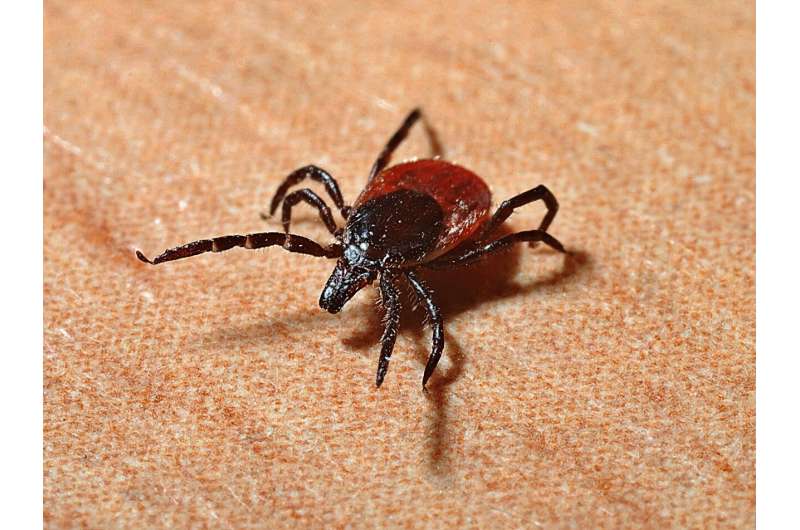Surrounding rural woodland shapes presence of ticks in urban greenspaces, study finds

Lisa Lock
scientific editor

Robert Egan
associate editor

Cities and towns surrounded by large areas of woodland are more likely to have ticks in their urban greenspaces, according to a new study.
The research, which was led by the University of Glasgow and is published in Nature Cities, found that while the number of ticks remains higher in surrounding countryside, they can also be found in some urban greenspaces—something many people may not be aware of. The researchers add, however, that not every urban greenspace will have ticks.
Overall, the study found that both the number of ticks, and the number of ticks infected with the bacteria that can cause Lyme disease, were two- and three-fold lower in urban greenspaces than in the woodlands surrounding towns and cities.
The study also highlights how the tick ecology of our towns and cities is uniquely shaped by different types of surrounding land areas. Researchers found that towns and cities that are bordered by large areas of woodland were more likely to have ticks in their urban greenspaces than towns and cities that had little surrounding woodland.
Scientists say that studying the relationship between towns and cities and their bordering countryside could help us better understand urban Lyme disease risk.
Dr. Sara Gandy, from the University of Glasgow's School of Biodiversity, One Health & Veterinary Medicine, said, "Our research has found that ticks can be more common in some of our city's urban greenspaces than people perhaps realize. However, there is great variation in the tick numbers in different cities, and our research shows their presence in urban greenspaces is dictated by the landcover surrounding our town and cities.
"Our research highlights why it is important for people to be aware of ticks wherever they may be; and while ticks are more commonly associated with being found in the countryside, they can also be found in some of our urban greenspaces in some cities."
Lyme disease—an infection contracted from the bite of an infected tick– is growing in incidence in people in the U.K. and large parts of Europe and North America. Although it is usually associated with rural areas, researchers are now investigating ticks in urban areas.
Professor Lucy Gilbert, Senior Research Fellow at the University of Glasgow's School of Biodiversity, One Health & Veterinary Medicine, added, "Overall there is less risk of Lyme disease in urban greenspaces than in surrounding rural woodlands; and interestingly, Lyme disease risk within a city is shaped by the amount of woodland surrounding a city, rather than how much woodland is inside the city."
For the study, the researchers collected data on tick and Lyme disease hazards in urban greenspaces and rural woodlands in and around 16 small cities in the U.K., including England, Wales and Scotland. The places included in the study were: Inverness, Perth, Falkirk, Dunfermline, Kilmarnock, Carlisle, Durham, Scarborough, Harrogate, Keighley, Halifax, Burnley, Macclesfield, Wrexham, Cannock and King's Lynn.
More information: Sara Gandy et al, The dependence of urban tick and Lyme disease hazards on the hinterlands, Nature Cities (2025). .
Journal information: Nature Cities
Provided by University of Glasgow
















